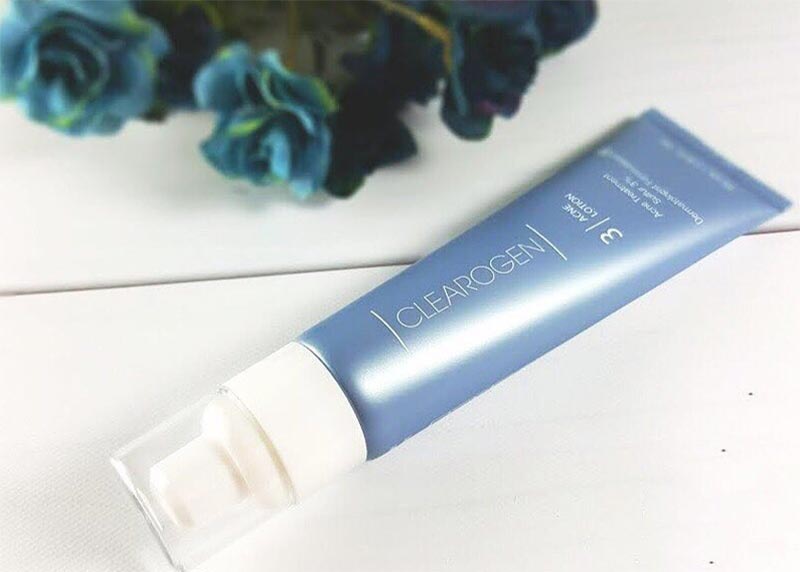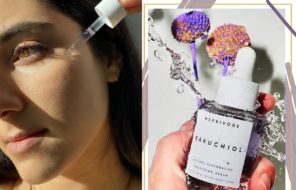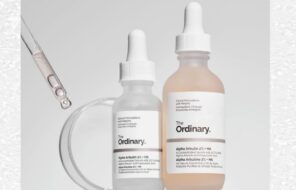If you’ve ever had to deal with acne, benzoyl peroxide has definitely popped up on your radar. Benzoyl peroxide is actually classified as an over-the-counter drug, which means it has been proven to work as a medication for light to moderate acne. For me, benzoyl peroxide has been one of the few effective preventatives for hormonal and stress-related breakouts.
With all this in mind, benzoyl peroxide also has a bad reputation as a harsh ingredient that can cause dryness and irritation to the skin. A lot of people caution against using it, saying that the drawbacks outweigh the benefits of benzoyl peroxide.
We’ll examine these statements and talk about the side effects of BP, so you can decide for yourself whether it seems like benzoyl peroxide products are right for you. We’ll also explain exactly how benzoyl peroxide works, and how it compares to other acne remedies. We’ll give you the lowdown on exactly how to use benzoyl peroxide products so that you can avoid getting dry or irritated.
In this article:
- What Is Benzoyl Peroxide?
- Benzoyl Peroxide Benefits
- Possible Benzoyl Peroxide Side Effects
- Can Pregnant Women Use Benzoyl Peroxide Products?
- Benzoyl Peroxide vs. Salicylic Acid
- How to Choose Benzoyl Peroxide Acne Treatments?
- How to Use Benzoyl Peroxide?
What Is Benzoyl Peroxide and How Does It Work?
Benzoyl peroxide is one of the most popular and effective acne treatments on the market. This fascinating ingredient is a type of peroxide that is able to penetrate past the top layers of the stratum corneum and into the pore. Once benzoyl peroxide has penetrated the skin, it releases oxygen, which kills the acne bacteria that cause the inflammation in the first place.
At the same time, benzoyl peroxide is also keratolytic, which means it promotes exfoliation in the skin by helping dead skin cells shed themselves. This helps unclog the pores, which is another element in acne production.
It is also said that benzoyl peroxide can reduce oil production and act as an anti-inflammatory to reduce redness and swelling, but unfortunately these claims have not been fully substantiated. However, many products that contain benzoyl peroxide also contain some anti-inflammatory ingredients, so you can still enjoy those benefits.
What Are the Benefits of Benzoyl Peroxide?
- Very simply, benzoyl peroxide is an acne-buster. If you deal with any type of acne breakouts, you definitely want to consider benzoyl peroxide as a candidate for eliminating them and preventing them from coming back.
- Benzoyl peroxide can be used in conjunction with oral antibiotics, as it can help prevent antibiotic resistance.
- Benzoyl peroxide acts very quickly, and applying it to the skin is very simple.
- As a mild exfoliant, benzoyl peroxide can prevent the skin cell build-up that clogs pores.
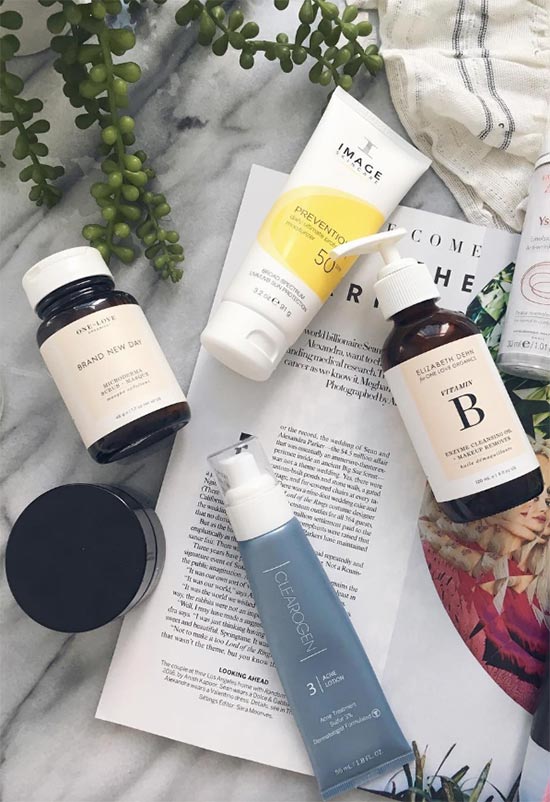
Possible Benzoyl Peroxide Side Effects You Should Know About
While this list may seem long, be aware that most of the benzoyl peroxide side effects are mild, temporary, unlikely to occur, or will only show up if you don’t use it correctly. I explain all of these nuances as I talk about these side effects one by one.
Skin Irritation
Benzoyl peroxide has the potential to irritate the skin, causing it to become red, tingly, or raw to the touch. This can occur with any powerful skincare active, which is why it is important to patch test it on a small area of thin skin somewhere else on the body, like the forearm.
If severe irritation occurs instantly, avoid using benzoyl peroxide. If it happens after continuous use, you can simply reduce how often you use it.
Skin Dryness
Due to its skin-peeling effect, as well as because it’s sometimes formulated in very harsh gels, benzoyl peroxide can cause dryness in the skin. Moisturizing is usually enough to prevent any dryness from benzoyl peroxide, although if it persists, then either reducing how often you use it or using it with a buffer (i.e. applying moisturizer or hydrating serum first, followed by benzoyl peroxide) should work.
Skin Photosensitivity
If you are a fan of the sun, you’d better load up on sunscreen. Benzoyl peroxide increases the skin’s sensitive to the sun, so it absolutely must be used in conjunction with a good sunscreen. As long as you wear sunscreen and regularly re-apply it, you shouldn’t have to worry – just be aware and be careful.
BP Acts Like Bleach
Benzoyl peroxide is a type of peroxide, which means it can act like bleach. Be careful when using benzoyl peroxide products near your hair or eyebrows, and expect that if you have it on your skin when you go to bed it might rub on your pillowcases or sheets, giving them bleach stains. Be careful to wash your hands after applying BP, to prevent traces of it bleaching your towels.
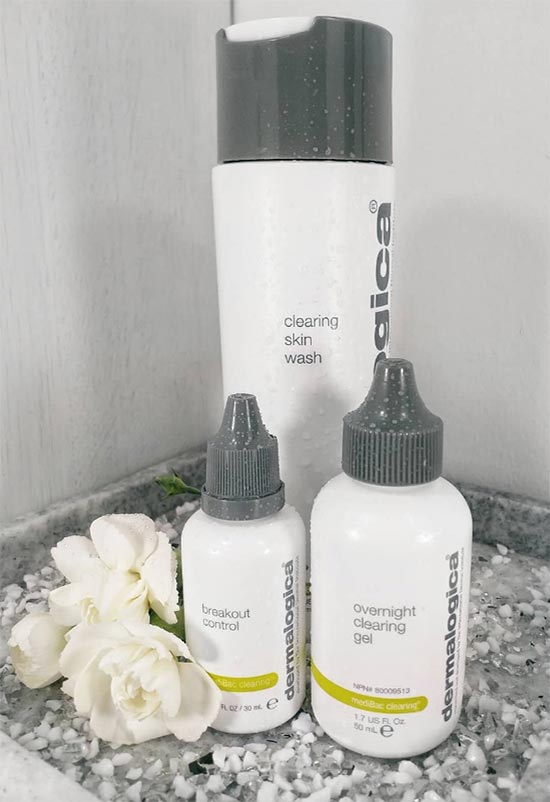
Premature Aging
Benzoyl peroxide is a pro-oxidant, and it is the oxygen that kills the acne. It is possible that the pro-oxidant effect could also cause free radical damage to the skin itself, and end up slightly increasing your chances of premature aging.
Because of this, it is important to use benzoyl peroxide in conjunction with moisturizers or serums that are rich in antioxidants like green tea extract, vitamin C, vitamin E, and many other natural extracts and oils.
Can Pregnant Women Use Benzoyl Peroxide Products?
During pregnancy many women find themselves suddenly starting to break out with hormonal acne. It hasn’t been established that using benzoyl peroxide during pregnancy is safe, but there is also no evidence suggesting that it might be unsafe.
Some sources say it is safe to use, since very little is actually absorbed by the body, and so it is very unlikely that it will have an effect on the fetus. On the hand, other sources say that it is best to avoid the risk and to not use benzoyl peroxide during pregnancy. If you are unsure it is best to speak to your doctor.
Benzoyl Peroxide vs. Salicylic Acid
Salicylic acid, like benzoyl peroxide, is also a super common and popular treatment ingredient for acne. Salicylic acid is a beta-hydroxy acid (sometimes referred to as BHA) that works as a phenomenal anti-acne treatment, by helping to control and prevent the proliferation of acne bacteria while also exfoliating the skin and treating inflammation. In that regard, it is quite similar to benzoyl peroxide.
However, there are some key differences. Benzoyl peroxide is a much stronger antibacterial than salicylic acid, although it also seems to be a slightly weaker exfoliant. Because of this, benzoyl peroxide acts better as a preventative for acne, since it kills the acne bacteria before it has had a chance to infect a clogged pore.
On the other hand, salicylic acid works more effectively to exfoliate the skin and unclog the pores. Because it’s a great anti-inflammatory, it can also reduce the look of acne breakouts fairly quickly.
For those who suffer from regular breakouts, or whose breakouts can be predicted based on their cycle, benzoyl peroxide might be the better choice, while salicylic acid will make for the better spot treatment. Salicylic acid is also a wonderful exfoliant, so it can be used on a daily basis all over the face, with exfoliation as its primary purpose.
With all of this in mind, I usually recommend that people try to clear their acne with salicylic acid first. This is because salicylic acid has very few side effects, and it tends to be much less irritating and drying when compared to benzoyl peroxide. It’s only when salicylic acid isn’t enough that I suggest jumping over to benzoyl peroxide.
Despite what some sources say, it is actually perfectly safe to use salicylic acid and benzoyl peroxide in the same skincare routine. Historically it was a bad idea because both salicylic acid and benzoyl peroxide products were formulated to be very mattifying and drying.
These days the formulas are gentler, and people also know that moisturizing their skin is very important. As long as the routine is nourishing, and the products don’t irritate the skin or cause over-exfoliation, it is perfectly okay to use both.
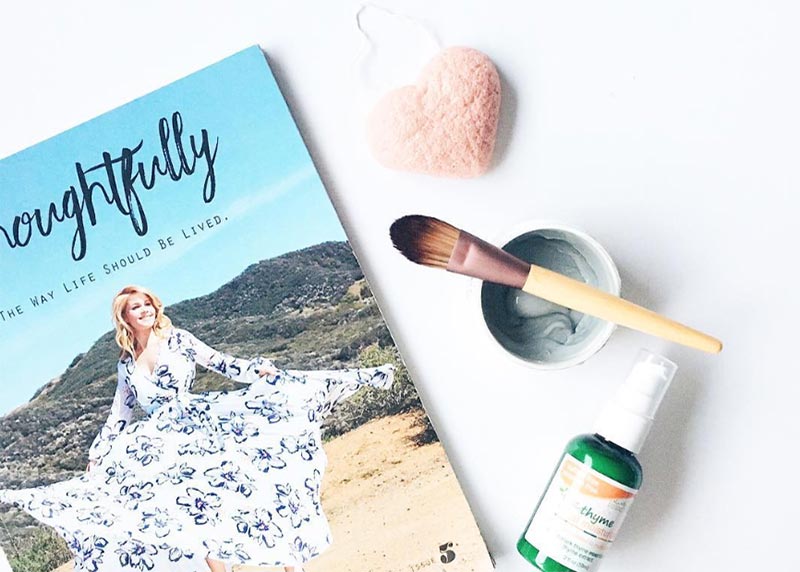
How to Choose Benzoyl Peroxide Acne Treatments?
Benzoyl peroxide has been proven to help clear acne from the skin, but the percentage doesn’t actually matter too much. There is no evidence that 10% will work better than 5% or 2.5%. Because of this, it is usually recommended to start at a low percentage of benzoyl peroxide, and to only go to a higher concentration if the lower one doesn’t work.
I think it makes the most sense to start with a benzoyl peroxide lotion. Lotions, especially the ones on my recommendation list of the best benzoyl peroxide products, tend to be creamier and to include moisturizing ingredients.
This is a good idea because benzoyl peroxide can dry out the skin, which is not helpful for any skin type because it can also lead to irritation. If you suffer from acne, and your skin is not extremely oily, definitely opt for a benzoyl peroxide lotion.
If you have extremely oily skin, you might prefer benzoyl peroxide gels. Gels tend to be less moisturizing to the skin, and they never contain comedogenic ingredients.
While for most the moisturizing ingredients are good, some people break out very easily with any emollient ingredients. In that case, opt for a gel that also has a very short ingredient list, as too many ingredients means too many things that might break you out.
Lastly, there are benzoyl peroxide cleansers. I don’t recommend many benzoyl peroxide cleansers because they don’t tend to be as effective as products that are left on the skin.
However, for those with very sensitive skin, benzoyl peroxide cleansers might actually be a good option, since the benzoyl peroxide doesn’t stay on the skin for too long so it doesn’t have much time to irritate the skin.
If you do choose to try a benzoyl peroxide cleanser, make sure to let it sit on your skin for a minute or two before rinsing it away, so the BP gets a bit of time to work.
How to Use Benzoyl Peroxide?
Most companies recommend that you use your benzoyl peroxide products twice a day. However, I think it is better to start by using it just once a day, at least for a week, and then perhaps switching to twice a day if necessary.
If you already have skincare routine that is very full of products, or if you are using other acne-clearing products, then you might actually find that using benzoyl peroxide once a day is more than enough.
- Cleanse
As with any product, make sure to start off with cleansed skin. There are all kinds of cleansing methods, from using micellar water to cleansing with oil, and they’re all fine by me. If you use a traditional foam or gel cleanser, the important thing is that you opt for a cleanser with a pH below 5.6, in order to keep your skin healthy and strong. Make sure all remnants of cleanser are gone.
- Using a BP Cleanser
If you are using a cleanser with benzoyl peroxide, massage it into your skin while it is still damp. Use upwards, circular motions, and make sure not to rub too aggressively. After you’re done massaging, let it sit on your skin for a couple of minutes, in order to allow the benzoyl peroxide to work. Rinse it off at the end, and follow up with the rest of your skincare routine.
- Tone
If you use a pH-adjusting toner, apply it to your skin with a cotton pad and upward swipes after cleansing.
- Apply Actives
If you use any pH-dependant active products, like salicylic acid or vitamin C serums, make sure to use them before applying your benzoyl peroxide acne treatment.
- Apply Your BP Treatment
Next, apply the benzoyl peroxide to your skin. Rub it into the skin gently, as you would any other lotion, but be careful not to break or irritate broken out skin. Benzoyl peroxide should not be applied all over the face, and especially not around the eyes. Apply it only to the areas of your face where you normally experience breakouts.
For benzoyl peroxide to penetrate the skin as quickly as possible and to act fast, it is best to apply it to dry skin. However, this method is also likelier to irritate the skin.
If your skin is on the sensitive side, you may choose to apply benzoyl peroxide after you’ve moisturized your skin either with a serum, a hydrating essence, or a light moisturizer. The moisturizer or serum will act as a buffer, and slow down how quickly the benzoyl peroxide penetrates, and thus reduce the chances of irritation or dryness. This is my favorite way of using benzoyl peroxide products. - Hydrate
Finish off your skincare routine with the serums or moisturizers you normally like, as well as your eye care. If you are caring for your skin in the daytime, makes sure to top everything off with a sunscreen with a high SPF, as benzoyl peroxide does make the skin more sensitive to sun exposure.
Photos via @clearogen, Instagram

